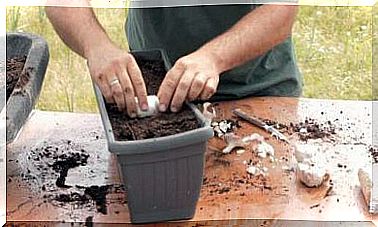8 Tips To Help You Eat More Vegetables

Changing habits can be difficult sometimes, and it requires full effort and commitment. However, if the change brings benefits to our health, we should do everything we can to put it into practice as soon as possible. To do that, we’ll share some great tips to help you eat more vegetables.
Why eat more vegetables?
They are part of a healthy diet that provides us with plenty of nutrients (including vitamins, proteins, fiber and minerals). Eating vegetables can even prevent certain diseases.
Despite the benefits, vegetables are less and less present on tables in many homes. Why is it like that? Perhaps it lies in reasons such as canned or produced food that are faster to prepare than vegetables.
If you have children at home, it is very important to promote an understanding of vegetables and fruits at a young age. We should use their baby food as a way for them to discover all the flavors and aromas that the food offers.
By telling them so at a young age, we can avoid a situation where they do not want to eat healthy and help them maintain a healthy diet in adulthood.
Eating vegetables is not synonymous with going on a diet, being a vegetarian or getting sick. On the contrary, to feel healthy, we need to add more vegetables to our diet.
Tips for eating more vegetables
We should consume 400 grams of leafy vegetables every day (raw, if possible). It may sound like a large, and perhaps impossible, quantity, but you can increase your intake gram by gram to begin with.
You will see that by starting to eat the minimum recommended amount, your body will ask for more.
Check out these ideas for eating more vegetables:
1. Customize your recipes

The dishes that you usually make or eat on a daily basis can be completely changed if you include some vegetables in the preparation.
For example, you can try adding:
- Chopped carrots in meatballs
- Fried broccoli in pasta
- Sliced eggplant stuffed between layers of lasagna, etc.
- You can even make a delicious omelette with asparagus, spinach, mushrooms and broccoli as a filling.
2. Start eating vegetables early in the day
Who says you can only eat fruit for breakfast? Although fruit is very healthy, we can also add vegetables to the mixture.
- Some nice options can be slices of cucumber or tomato, celery juice with carrot or an omelette with spinach leaves.
- If you start eating vegetables at the beginning of the morning, it will be much easier to meet the recommended intake of vegetables.
Buy vegetables that you have not tried before
The next time you go to the store, be sure to bring a vegetable that you have never tried before.
You do not have to buy a kilo of it, but just enough to taste it at home. Afterwards, look for a simple and quick recipe where to use it. The discovery will be a big surprise !
Changing the vegetables we eat has many benefits because we first get new nutrients. In addition, we will not get tired of always eating the same thing.
4. Make soups and smoothies
When it is cold outside, we often want heavier food with a high calorie content. We need a dish that can warm us up inside when we get home.
Is there a better alternative than a good vegetable soup? We are not talking about soups that come as a powder, but rather “the real soup” – just like Grandma would make.
There is less work than you think, and you may even want to leave leftovers that you can enjoy later.
On the other hand, in the summer we can enjoy delicious smoothies and juices made with raw or cooked vegetables. We can even mix in some fruit.
The vegetables that work well in such recipes are carrots, beets, celery, spinach and tomatoes. Do not forget to try a nice, cold gazpacho: it is both healthy and nutritious.
5. Keep the vegetables in sight

While it may be true that refrigerators have special compartments for vegetables and fruits, they are a bit hidden.
If we do not know that the vegetables are there… how should we use and enjoy them? A good idea is to keep most of the vegetables dedicated to them in the fridge, but leave some visible outside.
By having someone visible, they will be there waiting for us when we open the refrigerator door.
6. Look for “alternative” recipes
People who think that vegetarians and vegans only eat salad are wrong.
There are a million recipes that we can make to eat more vegetables, as well as let the palate enjoy new flavors.
Pumpkin pie, beet and lentil burgers, eggplant lasagne… there is a world of options around you.
7. Use them as a side dish

If you are someone who loves beef, chicken or fish, you can take advantage of vegetables to make all sorts of different dishes. Forget the typical, everyday salad.
Try a puree, a squash batter, fried squash, etc.
8. Prepare healthy snacks
Another good option to help you eat more vegetables, while avoiding salty snacks or baked goods, is to have a stock of carrot or celery sticks, cherry tomatoes, peppers or cucumber slices.
You can mix them with different dips such as:
- Chickpeas (hummus)
- Avocado (guacamole)
- Eggplant (baba ganoush)
- Greek yogurt and cucumber (tzatziki).
Having snacks is a good idea, and it also helps you avoid anxiety between meals.









